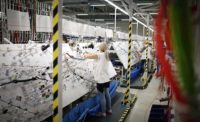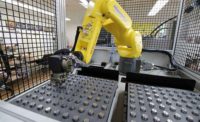By a lot of measures, U.S. manufacturing is doing pretty well. Manufacturing employment is at its highest level since April 2010. Manufacturing operations are running at more than 77 percent capacity. Spending on construction or renovation of factories is up 12 percent. And, more than 50 percent of companies plan to increase U.S.-based production by at least 5 percent in the next five years.
Those are welcome numbers, indeed. However, a lack of skilled labor could spoil the party, according to a study released in May by Accenture and The Manufacturing Institute. Accenture surveyed more than 300 executives from a range of U.S. manufacturers with average annual revenue of $100 million. The firm also interviewed a subset of these executives, as well as representatives of the National Institute of Metalworking Skills, economists, and industry specialists within the U.S. Department of Labor. The study was conducted between August 2013 and January 2014.
The results are alarming. Skilled and highly skilled personnel comprise 80 percent of the workforce for the companies surveyed. (The study defines skilled jobs as requiring an associate’s degree or 12 to 24 months of training and experience. Highly skilled jobs require a bachelor’s degree or at least 36 months of experience.) More than 75 percent of manufacturers report a moderate to severe shortage of skilled workers, and over 80 percent of manufacturers report a moderate to severe shortage of highly skilled workers. To make matters worse, a large portion of these companies’ existing skilled workforce is approaching retirement age.
These shortages have a major impact on costs. The lack of skilled labor affects quality, overtime cost, downtime, cycle time, scrap rates and customer satisfaction. For example, 70 percent of manufacturers say the lack of skilled labor has increased their overtime costs by 5 to 10 percent. Some 34 percent say it has increased downtime by 5 to 10 percent. Overall, the study found that the skilled labor shortage is costing U.S. manufacturers up to 11 percent of their earnings annually.
Fortunately, manufacturers can take steps now to alleviate this trend. For example, more than 80 percent of manufacturers have implemented some type of formal skills training program. In fact, nearly 10 percent spend more than $5,000 annually per employee on skills training.
Training is only part of the picture, however. To truly bridge the skills gap, the study’s authors recommend a multi-tiered strategy. First, manufacturers should take advantage of digital learning programs. For example, the American Welding Society offers a variety of online programs to teach welding skills. Second, manufacturers should partner with community colleges, and even high school vocational programs, to acquire formal training for existing talent and to build a pipeline of future skilled workers. Finally, manufacturers should take advantage of skills certification programs.
To learn more about the study, download the report here: www.accenture.com/ManufacturingSkills.




